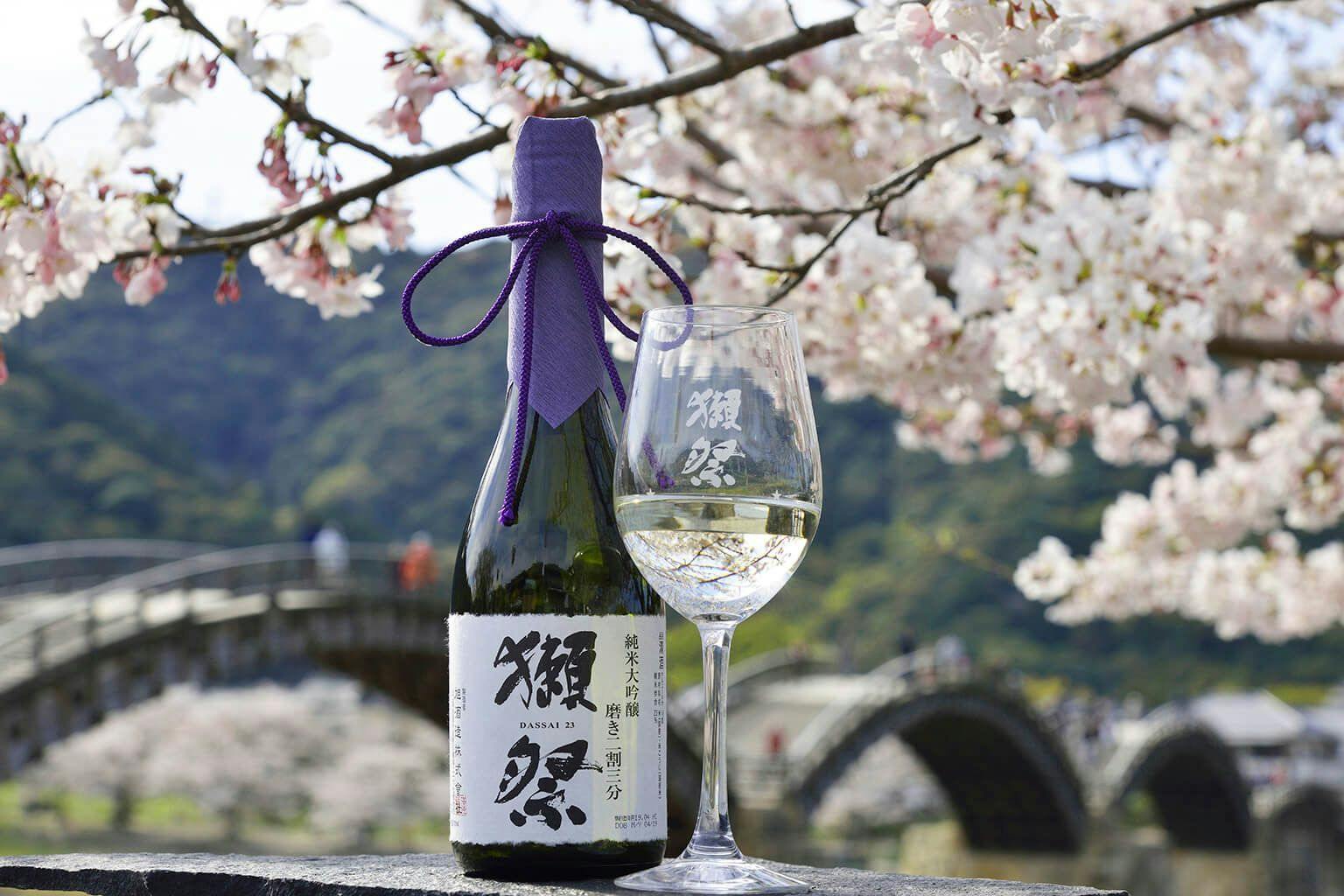Dassai Sake: “23,” “39,” “45,” “Nigori” and “Beyond”
Table of Contents
Last updated: April 7, 2023.
For many sake enthusiasts outside of Japan, myself included, drinking Dassai was a revelatory “wow!” moment. Until very recently in the U.S., the common image of sake was unfairly limited to a cheap beverage served hot to mask its mediocrity, or something college kids tossed into mugs of beer and guzzled down to get drunk more quickly. Through progressive marketing and technological innovation in brewing, Asahi Shuzo Co., Ltd.’s Dassai label helped upend these misconceptions, and contributed to showing the foreign market just how special sake is. Unimaginably smooth and graceful, complex yet so inviting and approachable, sake may also be served cold, as refreshing as spring water. Sake is meant to be savored and treasured, like drinking a liquid jewel.
What is Dassai?
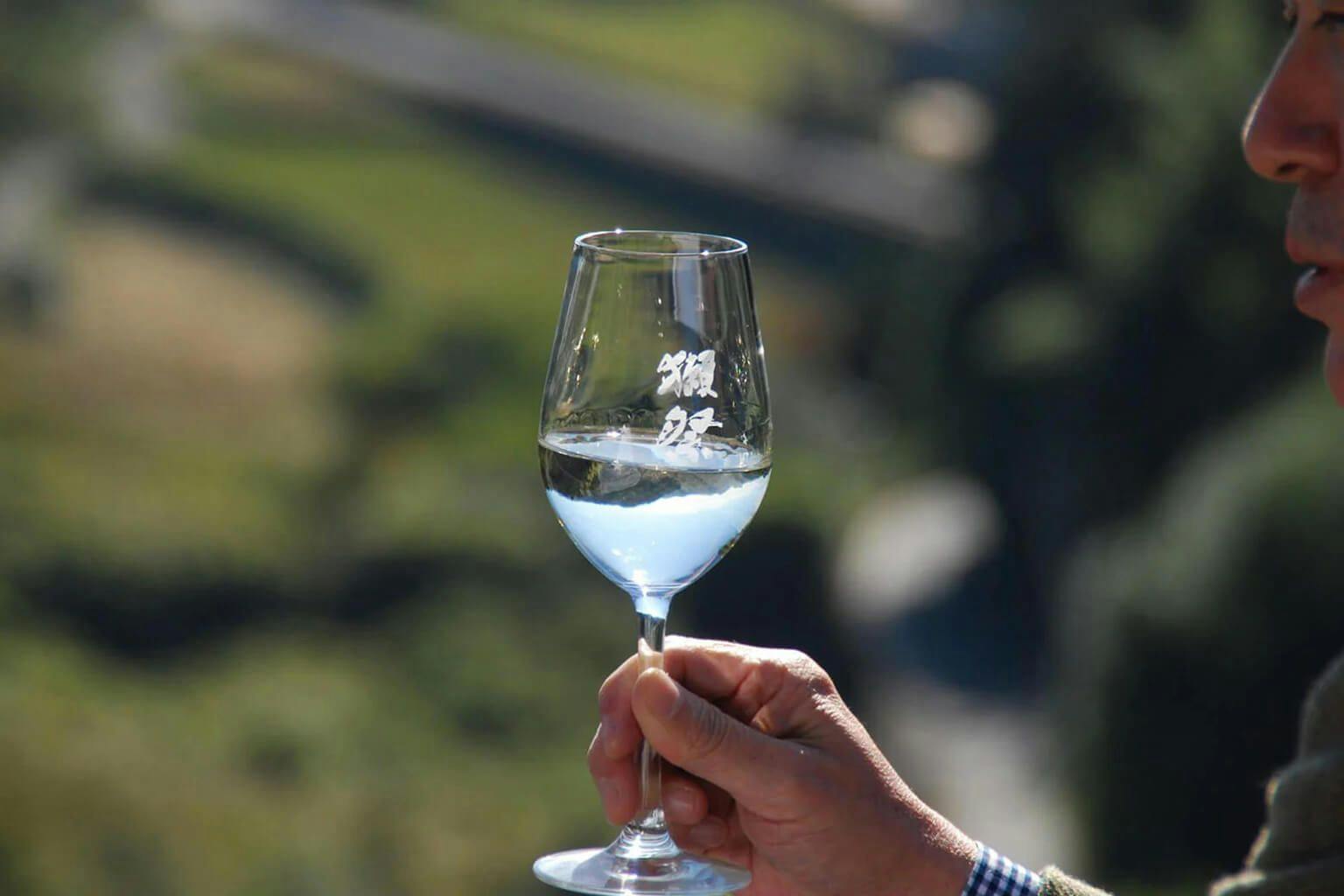
Courtesy of Asahi Shuzo Co., Ltd
There is very little that hasn’t already been said about Dassai. Its worldwide popularity is titanic. Produced by Asahi Shuzo Co., Ltd. in Yamaguchi prefecture in western Japan, the Dassai label transformed a crumbling brewery nearing bankruptcy into an international giant. Its rise from near ruin to successful pioneer and trendsetter in the industry is a fascinating story. They also helped raise the status of junmai daiginjo sake, now considered to be one of if not the most premium sake categories, by dedicating their label solely to its production. And in 2015, their flagship Dassai “23” was even served at a White House state dinner. (Read “Why Is the Brand “Dassai” So Famous?” to learn more.)
Here, we’ll be taking a look at Dassai’s selections and exploring some fun food pairings to enjoy the uniqueness of each brew. First of all, the numbers following the brand name are each sake’s “seimaibuai,” or rice polishing ratio. They represent the remaining percentage of each grain of rice after it has been polished, and are indicative of aroma, flavor and refinement.
How to choose the right Dassai for you
Choosing the right Dassai — or any sake, for that matter — comes down to flavor, budget and occasion. What taste are you looking for? How much are you trying to spend? Do you want to eat a specific type of food with your sake? These are all questions only you can answer. Hopefully, these descriptions will help make it easier for you to decide! For further guidance, you can also check out our Sake Guide lesson, “Best Bottles and Brands for Beginners.”
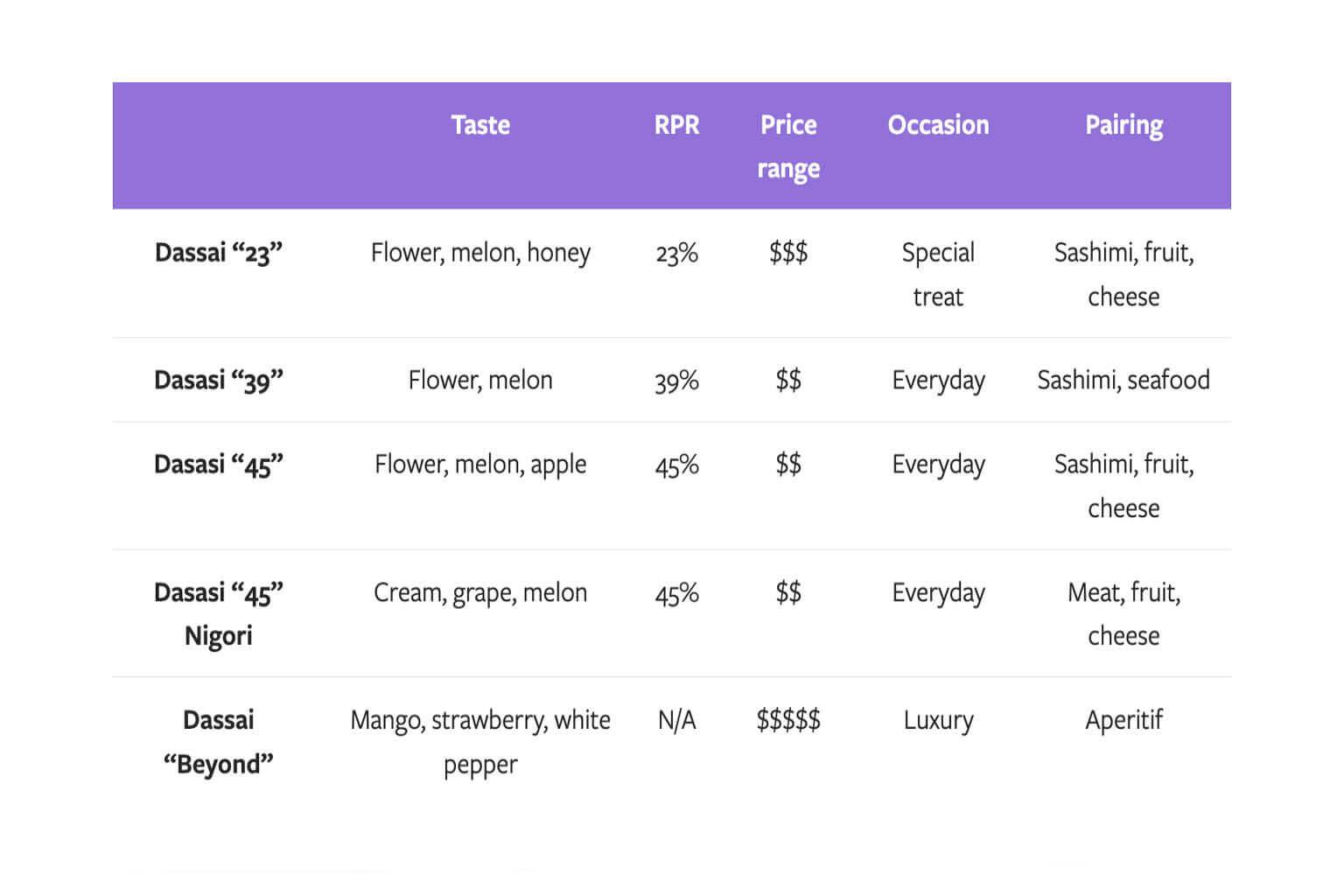
Dassai “23”
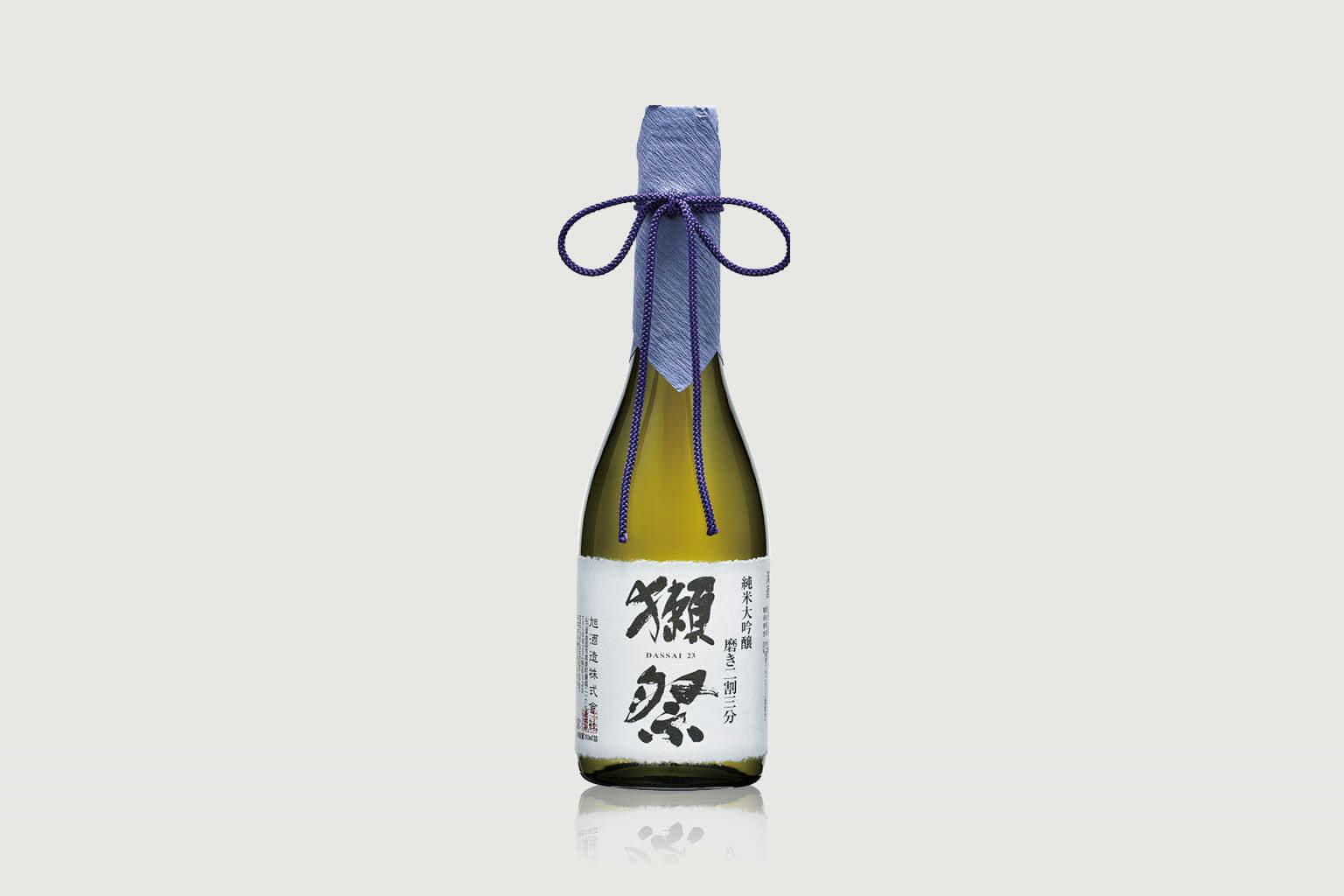
This ultra-deluxe junmai daiginjo has had over three-quarters of the exterior rice grain polished away to yield a truly remarkable sake. There are very few breweries that have ever attempted to create a sake using rice that has been so highly polished, or even possess the technology to make it possible. (In fact, Asahi Shuzo makes an even more premium Dassai that has been polished even further than this! Read our recap of their rooftop party in New York City for more.)
Dassai “23” has fruity and confectionary aromas with a touch of minerality. There are scents of green pear, pineapple, vanilla and angel food cake, with just a touch of petrichor. The wet stone minerality extends to the taste as well, allowing flavors of muscat grape and marshmallow to expand across the palate. Dassai “23” is extremely smooth and light. Being that it is such a unique and extraordinary expression of sake, in my opinion, it is best enjoyed on its own as an aperitif. However, pairing it with a bite of fresh sashimi or fruit is delicious too.
Dassai “39”
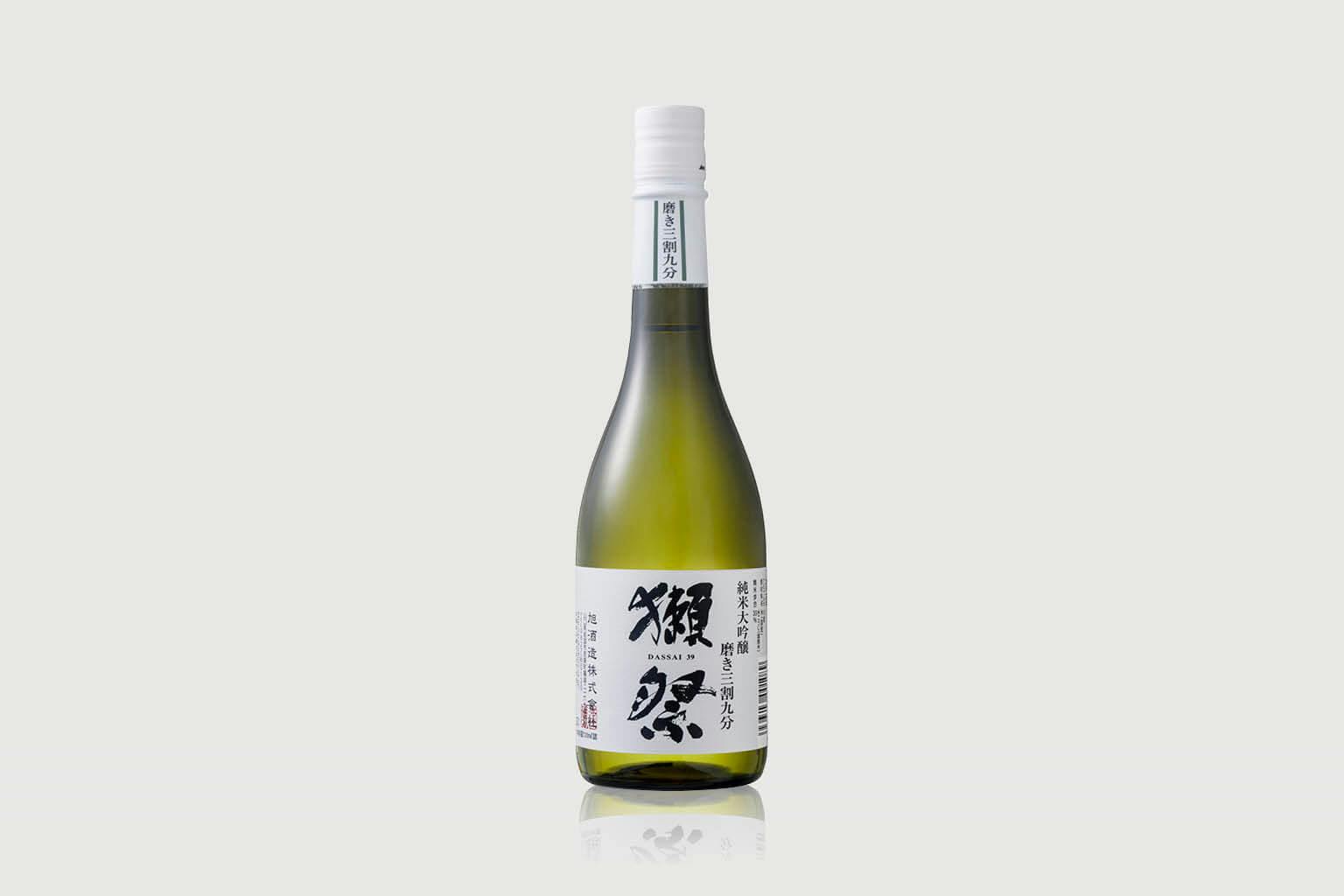
The “39” is a really lovely compromise between Dassai “23” and “45,” possessing some of the best characteristics of both. The aromas are more subtle than the “23,” but the acidity is higher, and the body is much more juicy and mouthwatering. There is a creamy, lactic texture in the mouthfeel as well. Savory and vegetal notes of fennel and cucumber make up the aroma, followed by ripe Golden Delicious apple. The profile is pleasantly dry for such a highly polished junmai daiginjo. I imagine a cold summer salad of watermelon, feta cheese, chickpeas, heirloom tomato and basil would be fantastic with Dassai “39.”
Dassai “45”
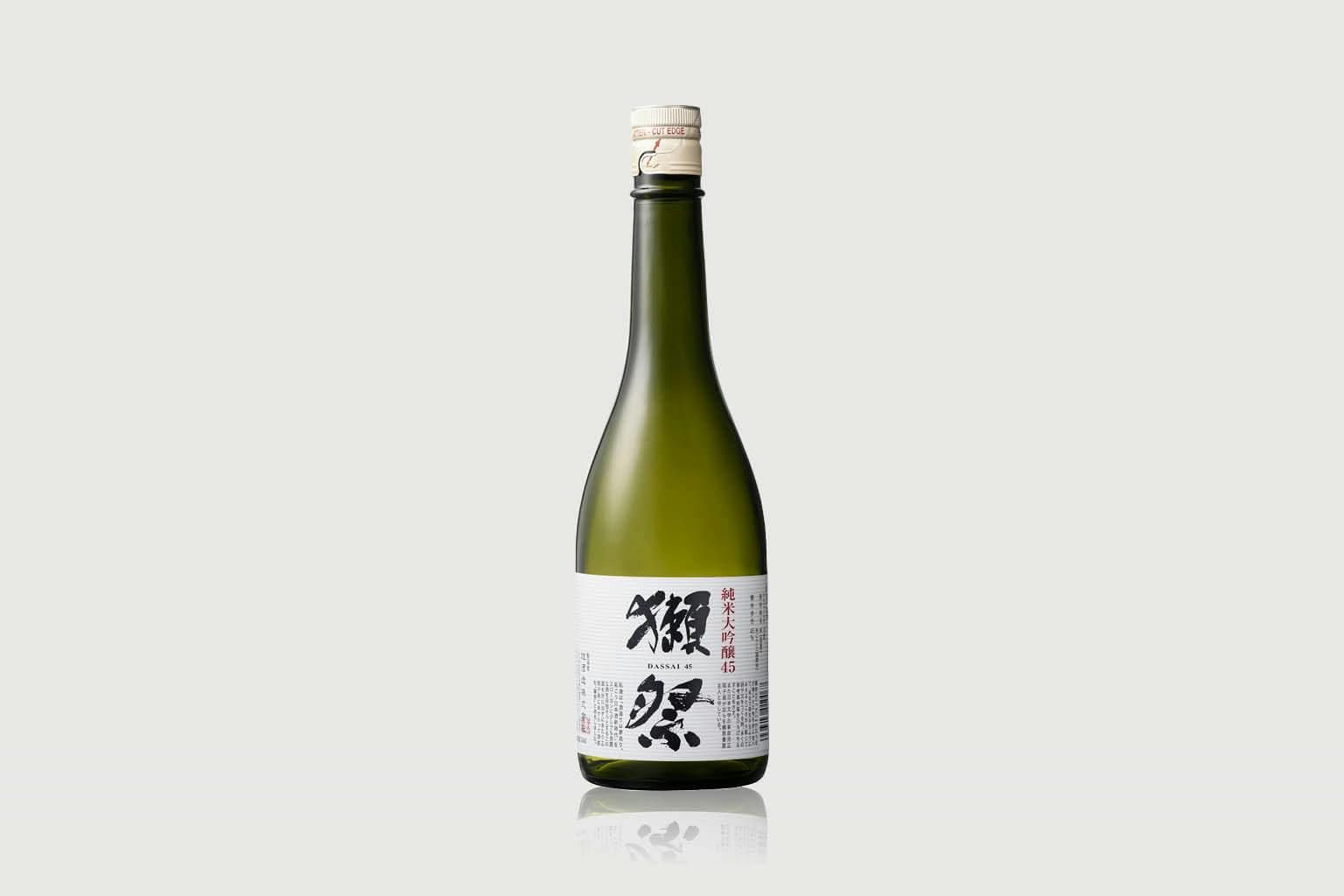
For a long time, Dassai “50” was the most popular and widely accessible sake of the Dassai line. Asahi Shuzo decided to push the polishing on the rice a bit further to set themselves apart from other junmai daiginjo sake, and brought the ratio down to 45. Thankfully, this extra polish has not rendered the sake too precious. This is a very versatile junmai daiginjo that could go with a wide variety of hot and cold dishes.
Compared to the previous two Dassai, the alcohol is much more present on the nose here. It’s drier, fuller in body, and possesses a higher acidity, making this sake more bold and assertive than its siblings. There are aromas of cantaloupe, almond and white flowers, and sweet flavors of ripe peach, grape and blueberry. Dassai “45” would go really well with chicken legs glazed in a honey-chili sauce, with a cucumber salad on the side. This sake has enough body to accompany white meat, fruity notes to balance the umami, and acidity to negotiate the honey’s sweetness.
Dassai “45” Nigori
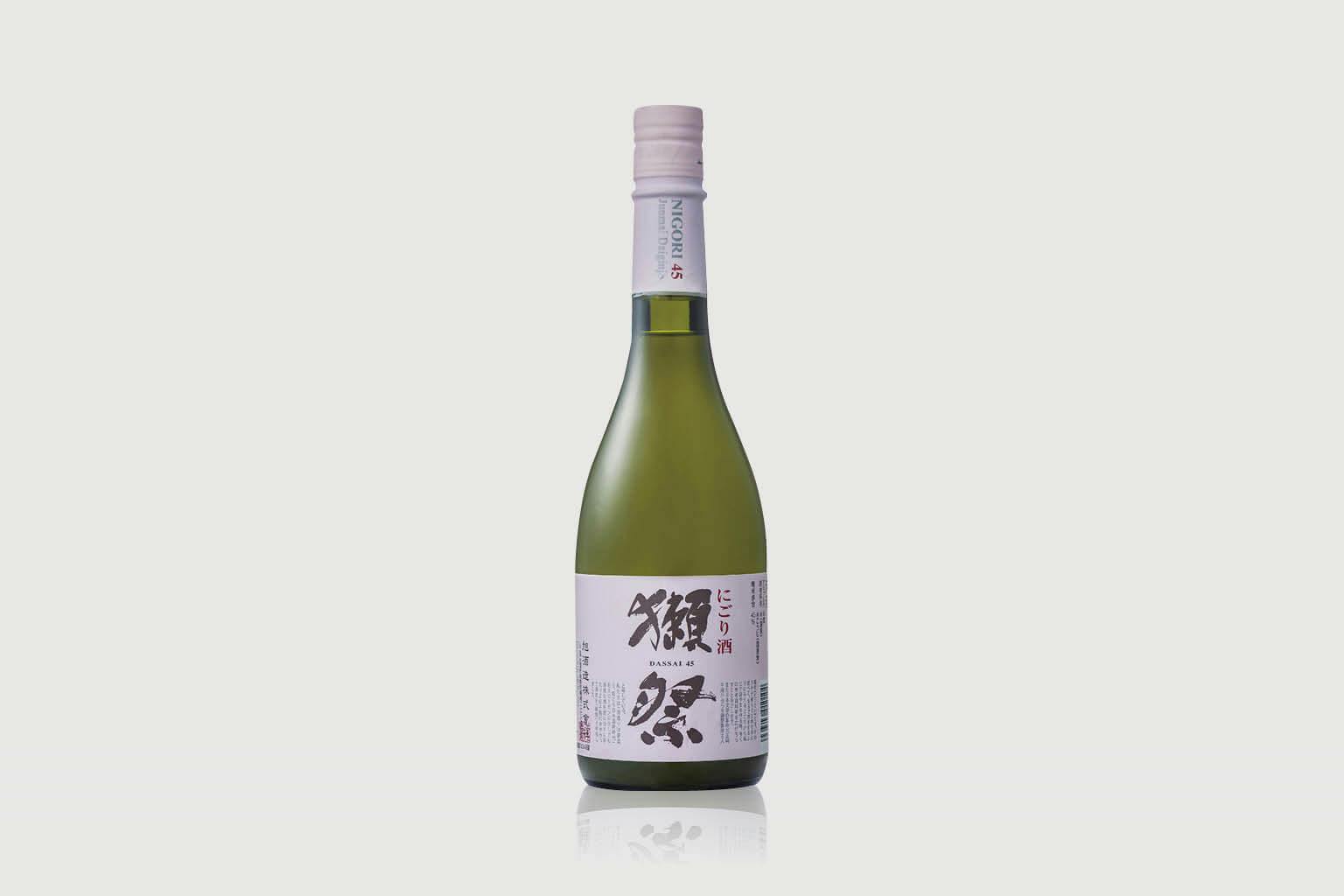
While there are some sake in the nigori category that go all-in with richness and sweetness, Dassai “45” Nigori takes a more restrained approach. While there is a clearly present sweetness with notes of juicy grape and melon, the sake lees of this “cloudy sake” are rather fine, giving it a soft, supple texture that is more graceful than others.
This nigori can partner well with richer, bolder meat dishes and cheeses, going a step further than its non-nigori counterpart. But if you have more of a sweet tooth, sipping it alongside some fresh fruit with whipped cream wouldn’t be a bad idea either!
Dassai “Beyond”
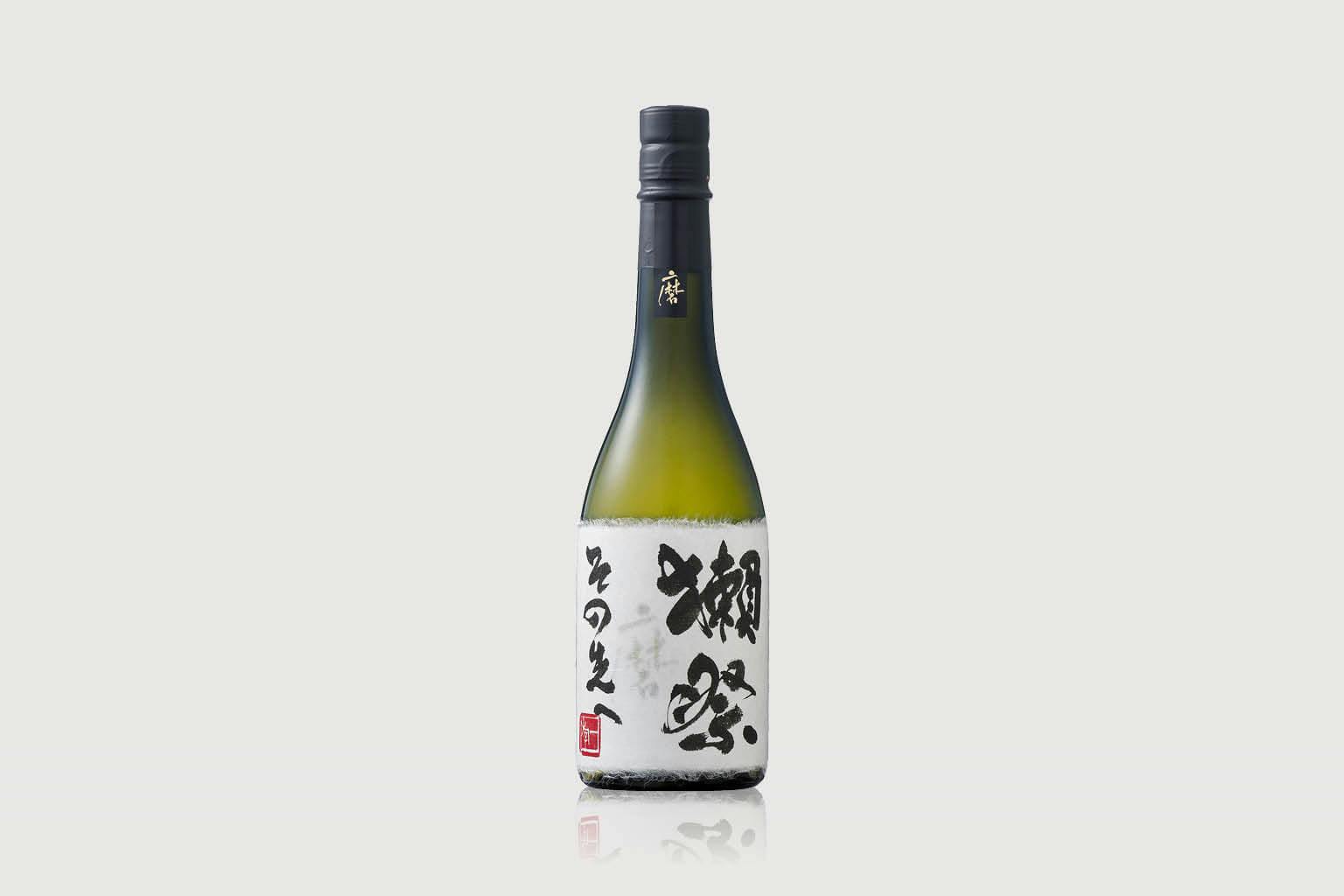
The preceding Dassai products are all titled after their rice polishing ratio, but that value remains undisclosed for the brand’s highly prized Dassai “Beyond.” The brewery crafted this enigmatic junmai daiginjo to surpass “23,” and took a decade to accomplish it. It is the finest commercially available Dassai sake in the U.S., and was indeed the brand’s finest sake overall until the creation of 23 bottles of Dassai “Beyond the Beyond” in 2022, the first bottle of which was put up for auction at Sotheby’s in New York with an initial estimated price ranging between $5,000 and $7,000.
Asahi Shuzo advises one to enjoy a glass of “23” prior to drinking “Beyond,” in order to truly grasp the latter’s sophistication. On the Tippsy site, we list some of the tasting notes as a unique combination of mango, strawberry and white pepper, but the full scope of this sake’s beauty can only be understood when tasted first-hand. Enjoy it as an aperitif to savor it in its truest form.
Dassai is special, but it’s not the only one
Dassai enjoys worldwide popularity as a leader in premium sake. The quality and the reach of its products has carved a unique space in the industry. But while the brand is a Tippsy bestseller, we also encourage you to venture out and discover all of the other amazing breweries and their incredible sake as well!
References:
Bennet, K. “White House state dinner to feature Japan — and china.” Politico, 2015.
https://www.politico.com/story/2015/04/white-house-state-dinner-honors-japanand-china-117379
“Dassai Beyond the Beyond 2022 Asahi Shuzo (1 BT).” Sotheby’s.
https://www.sothebys.com/en/buy/auction/2022/finest-wines-featuring-bordeaux-icons-from-a-gentlemans-cellar/dassai-beyond-the-beyond-2022-asahi-shuzo-1-bt
“DASSAI Beyond.” Asahi Shuzo Co., Ltd.
https://www.asahishuzo.ne.jp/en/product/main/beyond.html
“DASSAI Beyond the Beyond 2022.” Asahi Shuzo Co., Ltd.https://www.asahishuzo.ne.jp/beyondthebeyond2022/en.html

Bryan West
Bryan West has been a professional in the hospitality industry for over 15 years, and a longtime lover of sake. He currently works at n/naka, Chef Niki Nakayama’s temple to modern kaiseki cuisine in Los Angeles (2 Michelin stars, 2019). He is a certified Sake Advisor and Sake Sommelier through SSI (Sake Service Institute), and holds a Master’s of Fine Arts degree from UCLA. Bryan is thrilled over the current international sake boom, and is committed to being an ambassador for this wonderful drink that is so rich in culture and story.
Learn about Tippsy’s Editorial process
Recent posts
All about sake
Sign up to receive special offers and sake inspiration!
